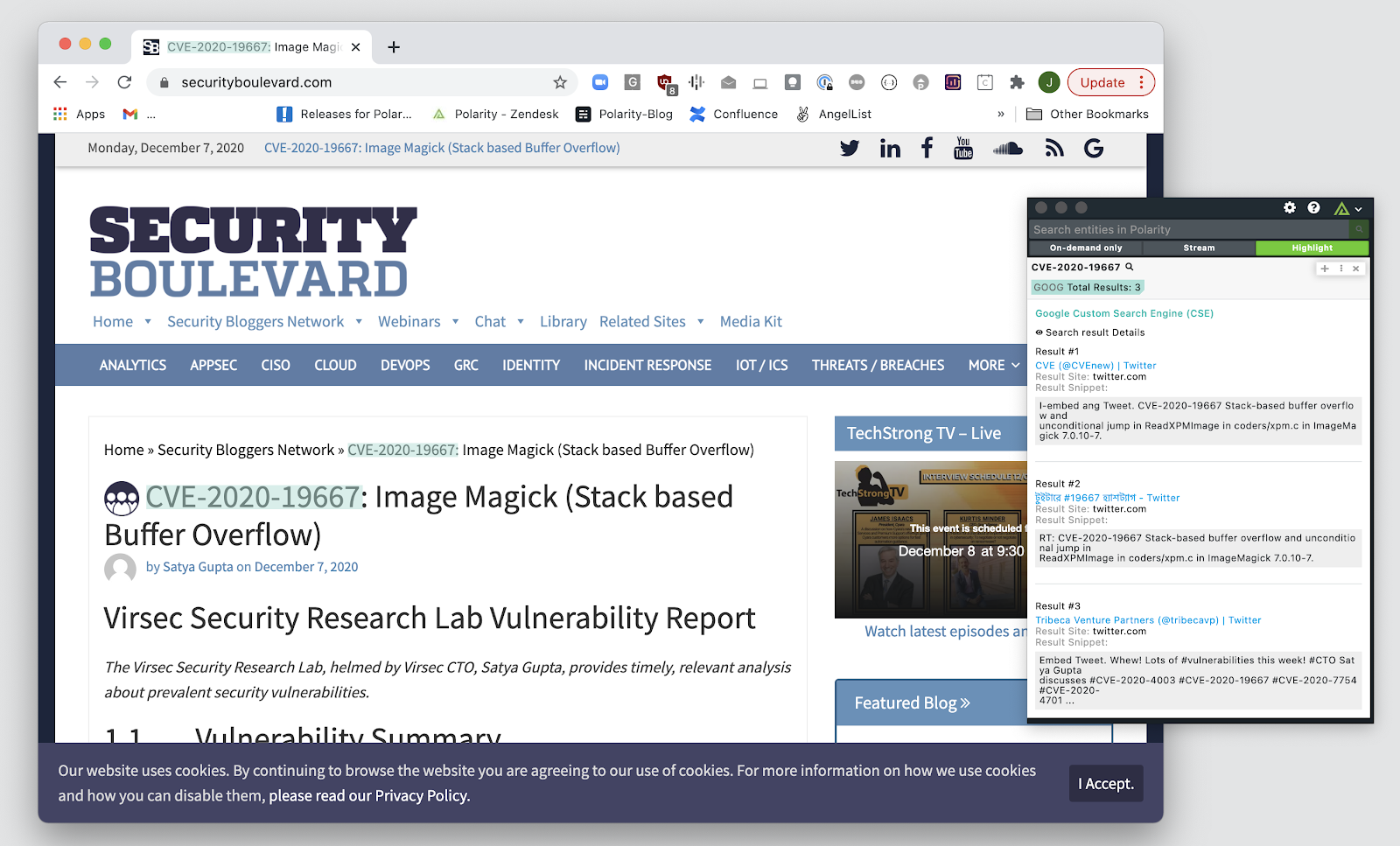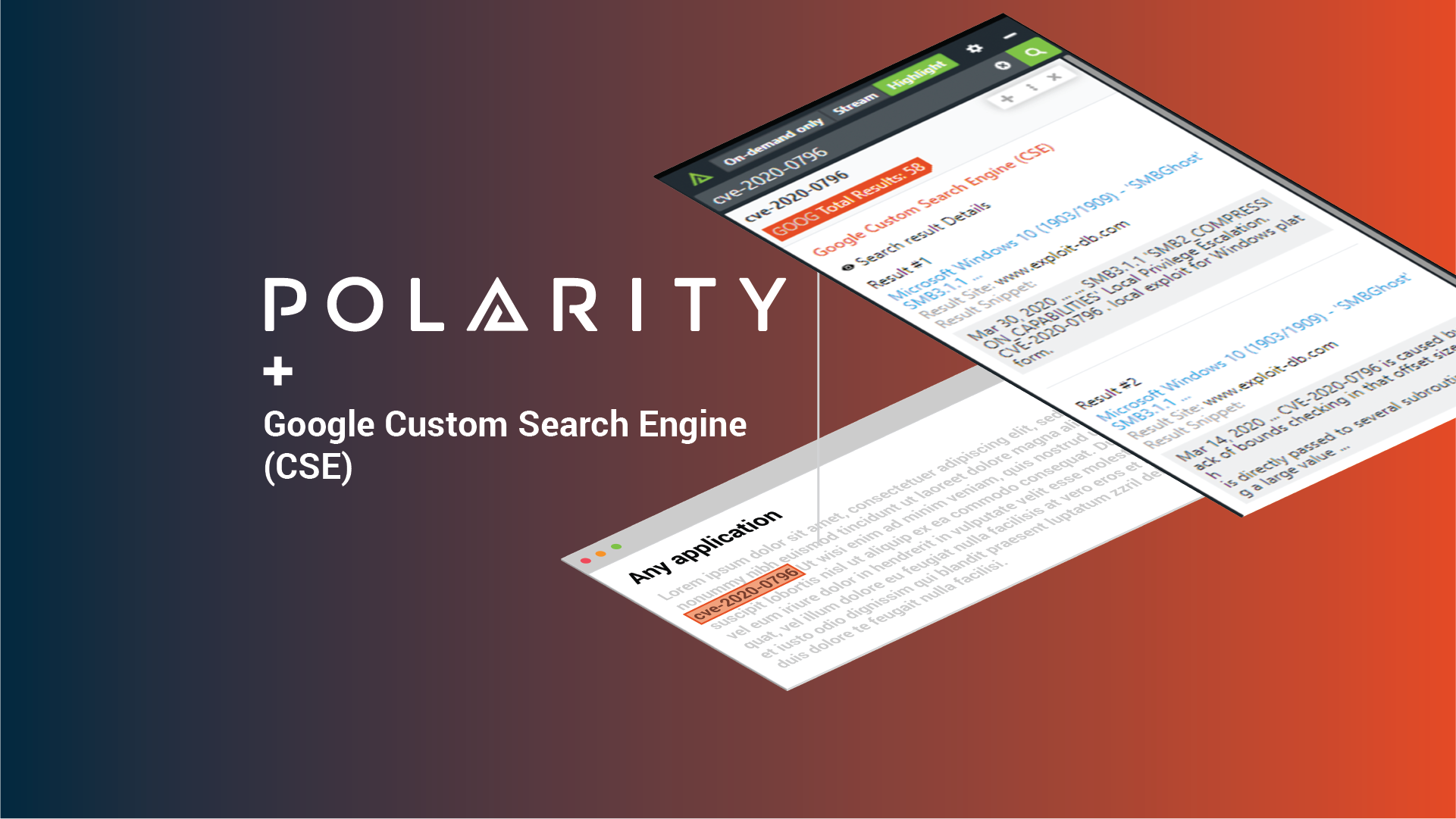Posted
Today’s post continues an ongoing series on Polarity Integrations. Data tells a story, Polarity helps you see it with Augmented Reality overlaying contextual information from the applications you use every day, no glasses or goggles required. With over 100 powerful integrations, Polarity’s open-source Integrations Library arms you with the right data at the right time to make informed decisions and take action with speed. This is the first in a series covering the Google Custom Search integration.
What is Google Custom Search Engine?
Google custom search engine is a Google search engine that is controlled by you. With Google, you are allowed to specify a search against any websites that you wish. For example, if you only wanted to search exploitDB and Twitter, you can set up a search engine to search just those websites. This can be set up for GUI searching through Google or through their API. You can read more on it here.
What does the Polarity – Google Custom Search integration do?
The Polarity- Google Custom Search integration takes a custom search that you set up and will look up any entity type that you pass through it. For example, if you wanted to search ExploitDB and Github for any exploit code you can do so very easily with the Google Custom Search Integration. In a follow-up blog post we will be covering some more specific examples and how to set up a Google custom search engine.

In this image, notice a CVE is highlighted in the screen on the left. On the right, you can see that Polarity’s computer vision recognized the text on screen, and in real-time while the analyst is working, it has provided contextual information for the highlighted CVE in the Overlay Window. This contextual information has been pulled from the Google Custom Search through the Polarity-Google Custom Search Integration.
